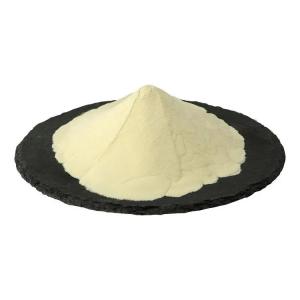Phosphatidyl serine is included in frozen fruit bars.
Time:2025-08-14Frozen fruit bars are a popular category in the frozen dessert market, known for their refreshing taste and vibrant colors. Incorporating phosphatidylserine into these products can offer functional formulation benefits and enable differentiation in product positioning. As a phospholipid ingredient, phosphatidylserine is compatible with the frozen dessert manufacturing process and can be used in both dairy-based and non-dairy fruit bar formulations.
Ingredient Profile
Phosphatidylserine is a naturally occurring phospholipid composed of a glycerol backbone, two fatty acid chains, and a phosphoserine head group. Commercially, it is commonly derived from soy or sunflower lecithin through specialized extraction and enzymatic modification. It is available in powder or oil-dispersible forms, allowing flexible incorporation into frozen dessert systems.
Functional Roles in Frozen Fruit Bars
When included in frozen fruit bar formulations, phosphatidylserine can serve several technical purposes:
Stabilization of Mixtures – Its emulsifying properties help maintain uniform dispersion of fruit purees, juices, and other components.
Improved Texture – By interacting with fats and sugars, it can contribute to a smoother mouthfeel and consistent bite, even after extended frozen storage.
Freeze–Thaw Stability – It can support structural integrity by reducing separation of water and solids during freezing and melting cycles.
Flavor Retention – Its lipid-binding nature can assist in retaining volatile flavor compounds during production and storage.
Formulation and Incorporation
Phosphatidylserine can be blended into the liquid mix prior to freezing. In water-based fruit bars, it may be added along with natural stabilizers such as pectin or guar gum. For dairy or plant-based creamy fruit bars, it can be incorporated during the fat-emulsification stage. The typical inclusion level ranges from 0.1% to 1% by weight, depending on the desired textural and stability outcomes.
Compatibility with Other Ingredients
Frozen fruit bars often contain fruit purees, juices, sweeteners, natural colors, and flavorings. Phosphatidylserine shows good compatibility with these ingredients and can be used alongside common stabilizers, sweetener blends, and plant-based fats without adverse interactions.
Processing Considerations
Phosphatidylserine withstands standard frozen dessert production steps, including pasteurization for dairy-based mixes, homogenization, and rapid freezing. To ensure even distribution, it is recommended to pre-disperse phosphatidylserine in a small portion of the mix’s lipid or aqueous phase before adding it to the main batch.
Marketing Perspective
From a commercial standpoint, the inclusion of phosphatidylserine can enhance the appeal of frozen fruit bars in premium or specialty segments. Clear ingredient labeling and product differentiation can help manufacturers position their products effectively in competitive frozen dessert markets.
Conclusion
Phosphatidylserine offers technical and formulation benefits when used in frozen fruit bars, contributing to product stability, texture quality, and processing efficiency. With careful integration into production, it can support the creation of high-quality, distinctive frozen treats that meet consumer expectations.


 CN
CN





